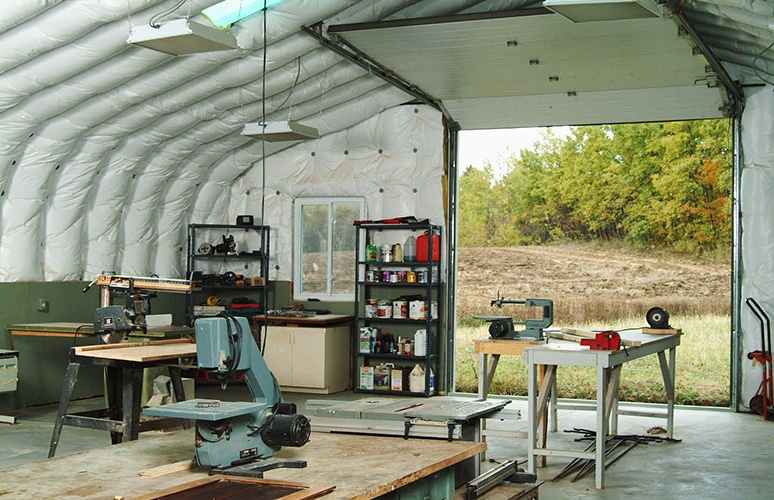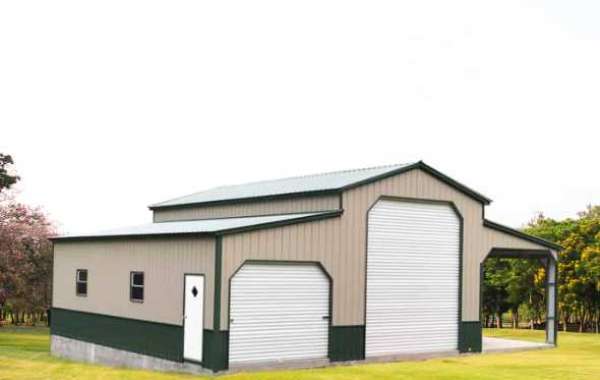With reliable protection from weather and vermin deterioration impacts, prefabricated metal construction lends unparalleled durability to structures interfacing daily with tough agrarian conditions or variable climates. Farm buildings thus perform essential shelter roles efficiently.

Customization for Specific Applications
Beyond basic sizes and configurations, Metal Barns can be highly customized to suit the precise requirements of virtually any agricultural application. Livestock producers in particular often have very specialized shelter needs that prefabricated metal buildings can be adapted to meet. Some of the most common livestock-specific Pre Built Barns customizations include:
Dairy Barns: Dairy barns typically feature free stall designs accommodating rows of headlocks or stanchions for tie or free-roaming animals. Optimal stall dimensions typically range from 6-7 feet to allow adequate space for calves, heifers or mature cows to comfortably stand, lie down and rise. Alleys between rows require a minimum of 6-7 feet clearance for feed carts and manure scrapers. Additional amenities may include calf pens, maternity areas, milk parlors, automatic feed pushers and feed bins.
Beef Barns: Beef cattle barns often incorporate straw-pack calving areas with extra insulation and slope floors for easy manure removal. Wide drive-in alleys streamline feeding while headlocks aid veterinary procedures. Hay storage lofts or lean-tos prevent wasted feed. Curtained winter lots or lots with windbreaks protect cattle.
Horse Barns: Horse owners appreciate broad 12-14 foot stalls with high loft ceilings to accommodate large animals and storage of feed, tack and equipment overhead. Quality floors tolerate urine without odor. Extra doors or alleyways accommodate trailer access.
Poultry Barns: Precision environmental controls allow tightly regulated temperature, humidity, lighting, ventilation and manure management in poultry Pre Built Barns. Feed and water lines minimize labor. Separate male-female zones or all-in/all-out multi-age rotations optimize production. Slatted floors protect birds’ feet.
Hog Barns: Hog facilities are engineered for cleanliness. Slatted or slotted floors suspend animals above feces collection pits or flush drains. Feddling and nursery areas stabilize piglet environments. Stainless or non-corrosive materials endure cleaning chemicals.
Sheep Barns: Sheep housing uses sturdy dividing fences or stanchions within larger bedded loafing areas. Self-feeders keep hay freshest longest with minimal waste. Lambing jugs support newborn monitoring and bonding.
Such detailed amenities address intensive animal industries’ stringent standards for biosecurity, animal well-being and productivity. Attentive manufacturers ensure buildings achieve intended purposes through diligent engineering collaborations with farmers.
Construction Materials
While galvanized steel is by far the most common material for prefabricated Metal Barns, certain applications may warrant alternative metals with unique benefits:
Aluminum: Lighter weight aluminum speeds assembly and tolerates larger clearspan roofing. Formability matches steel aesthetically yet resists corrosion far better, important for seaside siting. However, aluminum costs more initially than steel.
Stainless Steel: Where aggressive chemicals are common, stainless stands up to anything without routine maintenance. Dairies and industrial beef facilities thus utilize stainless extensively. The material comes at a much higher price point but saves long-term.
Weathering Steel: Also called Corten steel, this alloy forms a stable rust-like oxidation naturally without painting. It blends attractively into landscapes while maintaining strength without coatings that chip or fade over decades.
Composite Panels: Metal-skinned paneling fused to insulation cores like polyisocyanurate delivers optimal thermal and sound performance. Factory-applied exterior and interior finishing eliminates need for additional work. Increased costs relate directly to energy savings potential over time.
Concrete/Steel Hybrids: In high-wind regions or where bearing extremely high livestock or equipment loads, concrete endwalls with steel framed superstructures or metal buildings set upon concrete slabs provide robust, code-compliant solutions beyond basic steel alone.









